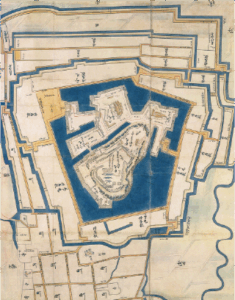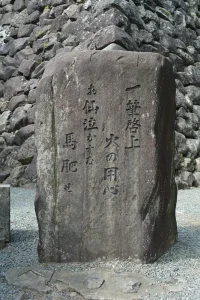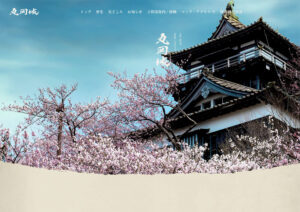expansion・ Link
Over 440 years ago, in the third year of Tensh (1575), Oda Nobunaga dispatched a large army to suppress the Ikk-ikki uprising in Echizen. At that time,he attacked Toyohara-dera, located 4 km northeast of present-day Maruoka, and burned down all the temple buildings. . As a reward for this achievement, Nobunaga granted Shibata Katsuie control over the province of Echizen and ordered him to build a castle in Kita no Sh (modern-day Fukui City). Katsuie sent his nephew Katsutoyo to Toyohara, where he built Toyohara Castle. However, in the following year, Tensh 4 (1576), Katsutoyo moved from Toyohara to Maruoka and constructed a new castle, which is the current Maruoka Castle. After Katsutoyo, the castle became the residence of Yasui Iekiyo, Aoyama Shri-no-suke, Aoyama Tadamoto, Imamura Moritsugu, four generations of the Honda family led by Honda Narishige, and then eight generations of the Arima family, until the Meiji Restoration. From the mid-Taish period to the early Shwa period, the moats were filled in, and today, only the main keep, the tenshu, and part of the stone walls remain, with the site now serving as a park. The original castle grounds featured a wide, pentagon-shaped moat with samurai residences arranged on the outer perimeter. Additionally, rivers were used to create an outer moat that enclosed temples and civilian houses, forming a castle town. own.
Maruoka Castle is one of the oldest surviving castle keeps and features an architectural style indicative of its age. Its exterior forms a multi-storied watchtower without continuous pillars, with the first floor acting as a base supporting the second and third floors.
The roof is double-layered, while the interior has three floors.
This type of ancient-style watchtower keep, compared to the later multi-tiered tower keeps, demonstrates how early it is in the history of castle architecture.
Additionally, the roof being entirely covered with stone tiles is a rare feature nationwide.
n 1934 (Shwa 9), Maruoka Castle was designated a National Treasure.However, it collapsed during the Fukui Earthquake of 1948 (Shwa 23).
It was designated an Important Cultural Property in 1950 (Shwa 25) and was reconstructed in 1955 (Shwa 30).
expansion・ Link
The letter “Ippitsu Keij: Beware of Fire, Don’t Make Osen Cry, and Fatten the Horse” was written by Honda Sakazmon Shigetsugu, a close retainer of Tokugawa Ieyasu, renowned as *Oni Sakaz* (Demon Sakaz). He sent this letter to his wife from the battlefield, and it is famous as a model for letter writing. ng.


